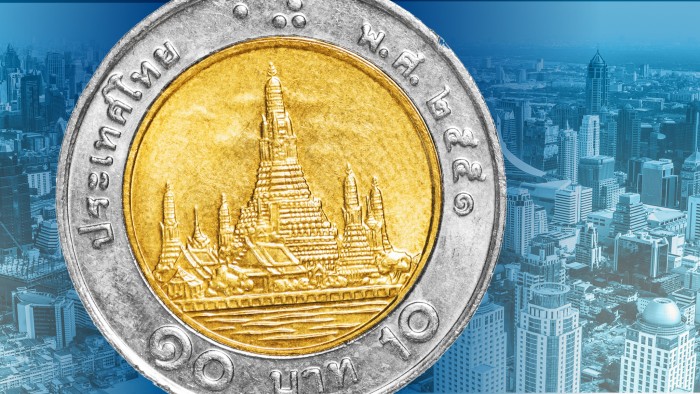The untold story of the world’s most resilient currency


Roula Khalaf, Editor of the FT, selects her favourite stories in this weekly newsletter.
The writer is chair of Rockefeller International
In February of 1998, 25 years ago this month, I was in Bangkok, ground zero of the Asian financial crisis. The implosion of the Thai baht had triggered a serial meltdown of currencies and markets with protesters in the streets across the region and chaos spreading. As world leaders raced to slow the global contagion, Thailand and its neighbours had sunk into a depression.
The Thai economy contracted by nearly 20 per cent, as stocks fell by more than 60 per cent and the baht lost more than half its value against the dollar. Prices in Bangkok felt unbelievably cheap. I did not dare buy Thai stocks, with so much unsettled. But I did leave with many shopping bags and two golf sets, one to give away.
While the drama of that year is etched in history, the epilogue comes as a surprise. Since early 1998, Thailand has faded on the global radar but the baht has proved uncommonly resilient, holding its value against the dollar better than any other emerging world currency and better than all but the Swiss Franc in the developed world.
In contrast, in Indonesia, where the 1998 crisis toppled the dictator Suharto, the rupiah trades near 15,500 to the dollar, down from 2,400 before the crisis. The baht trades at 33 to the dollar, not much lower than 26 before the crisis.
Yet Thailand hardly feels expensive: a foreign visitor can find a 5-star hotel room for under $200 a night, a fine dinner in Phuket for $30. Despite the strong baht, Thailand is globally competitive. The epicentre of the crisis became an anchor of stability, and a lesson to other emerging economies.
After 1998, many emerging societies turned financially conservative, especially those hardest hit in south-east Asia. Indonesian banks went from opaque dens of cronyism to models of good management. The Philippines and Malaysia moved to rein in deficits. But nowhere in the region did a government turn more economically orthodox than in Thailand, avoiding the excesses that can scare off outsiders and tank currencies.
South-east Asia was in recovery by 2000. Since then, Thailand’s government deficit has averaged 1 per cent of gross domestic product, less than half the average for emerging economies. Its central bank has been similarly cautious, keeping rates relatively high and broad money supply growing at 7 per cent a year, third lowest among major emerging economies.
The ultimate pay-off for orthodoxy is low inflation. Thai inflation has averaged just over 2 per cent, the same as the US, a rare feat for an emerging country. Among other emerging economies, only China, Taiwan and Saudi Arabia have had lower inflation than Thailand since 1998.
Before the crisis, Thailand pegged the baht to the dollar, which allowed it to borrow heavily abroad, and run up huge current account deficits. As foreigners lost confidence in Thailand, the government was forced to drop the peg and allow the baht to float freely. Its crash followed, but the baht would go on to recover its losses and become one of the least volatile currencies.
Steady foreign income helped. Thailand remains among the most open emerging economies. Trade has risen from 80 per cent of GDP in 1998 to more than 110 per cent today. The external deficits that foretold the crash gave way to surpluses, as Thailand built on its strengths in tourism and manufacturing, which generates a quarter of GDP.
During the crisis I drove on a new four-lane highway out of Bangkok to see the factories rising on the green pagoda-dotted hills of the eastern seaboard. This manufacturing base in paradise continues to evolve, lately for example from cars into electric vehicle parts, and to draw heavy foreign investment.
Meanwhile the tourist hotspots around Phuket and Koh Samui expand alongside new forays into medical and wellness services. Since the crisis, tourism has more than doubled as a share of GDP to 12 per cent, becoming an unusually large source of foreign exchange. Most countries with tourist sectors that big are tiny islands.
Thailand also has its flaws, including heavier household debts and a more rapidly ageing population than most of its peers. Despite that, its per capita income has more than doubled to nearly $8,000, up from $3,000 before the crisis.
Moreover, Thailand has achieved financial stability despite constant political upheaval, including four new constitutions in the last 25 years. By overcoming challenges the Swiss franc never faced, the Thai baht has sealed its unlikely claim to be the world’s most resilient currency — and a case study in the upsides of economic orthodoxy.
Comments